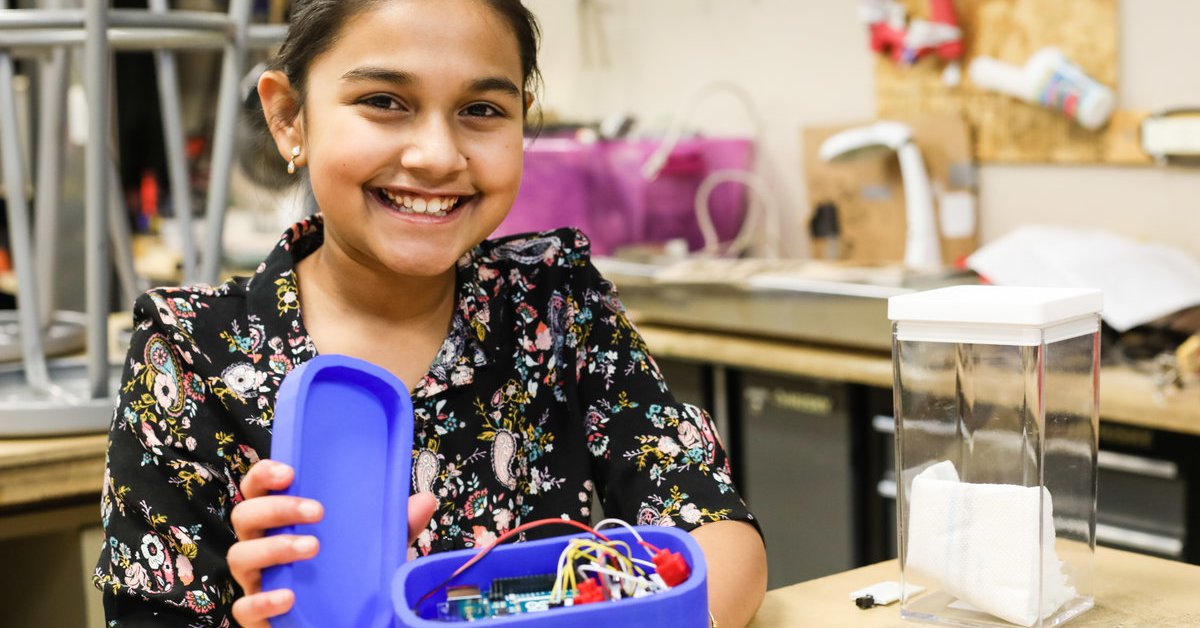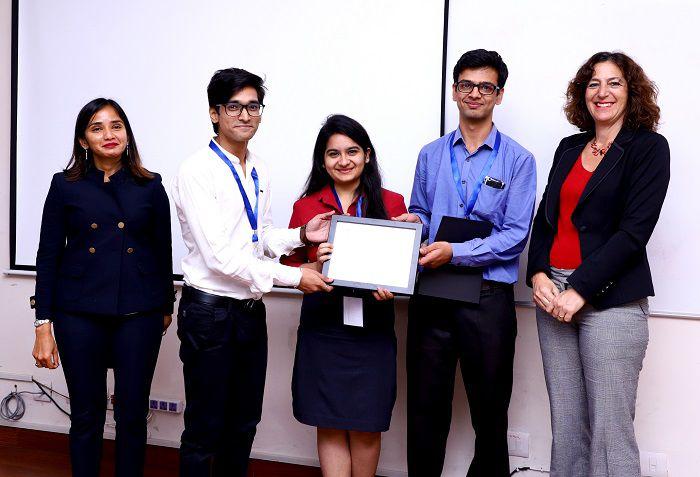13 Young Indian Inventors Who Are Making The World A Better Place
Dhir Acharya - Jun 26, 2019

In India, we have seen many brilliant young minds with inventions to solve existing problems such as pollution, energy consumption, and plastic plague.
- Delhi Is The World’s Most Polluted Capital City For Three Years In A Row
- Indian Farmers Install High-Tech, Night-Vision CCTV Cameras To Protect Themselves
- Looking For The Best Electric Bike In India 2021? Take A Look At These
"Children are the future," that's what we always say and we believe that makes sense. They are not only doing much further than their age but also addressing problems that we have been dealing for a long time. And in India, we have seen many brilliant young minds with outstanding inventions to solve existing problems such as pollution, energy consumption, and plastic plague. Now, let's take a look back at some of the greatest young Indian geniuses that are helping change the world.
1. An app for checking pollution
This app was developed by Tanmay Srivastava, Prerna Khanna, and Kanishk Jeet, the students from Delhi-based Bharti Vidyapeeth College of Engineering. Dubbed 'Air Cognizer', this Android app allows users to measure AQI (air quality index) in their surroundings with just a smartphone, and it's free.

To take the measurement, users just need to upload a photo taken outdoors, with half as the sky. The app will then use machine learning image processing techniques to compare it with data and images related to AQI. That way, Air Cognizer will tell the level of pollution in the user's area. The team won a Rs 1,09,500 cash prize from Marconi Society in the US.

2. Filters to clean car exhaust
Class XI student Satyam Thakur from Bangalore looked for an easy way so that people can reduce their carbon emissions. The boy realized that the materials used for making clay pots in Indian homes can absorb particulate matter. He used broken clay pots to make cheap filters which can fit in car exhausts, and make them larger to cover factories’ chimneys.

After using these filters, we can turn them into clay bricks to use in construction, or dust them off with no environmental harm and reuse them. Furthermore, Thakur found that they can filter water, making it drinkable. Since the filters are made of common waste, they are cheap.
3. A portable device for checking water pollution
12-year-old Gitanjali Rao wanted to help people have clean water to drink. She created Tethys, a device that can check how much lead is in a water sample, hoping to save people from illness or even death. The device is fast, accurate, and portable. And for a country where monsoon flooding usually contaminates water sources for spreading runoff from factories nearby, Rao believes such devices should be widely used.

4. A ship for cleaning plastic from the sea
Also at the age of 12, Haaziq Kazi wanted to address the long existing pollution problem of the world. He designed a ship which travels across the ocean, picking up garbage as it moves.

Dubbed ERVIS, the ship uses hydrogen power and renewable gas. The ship has an apparatus that creates mini whirlpools sucking water from nearby and the floating trash coming with it. Then, the waste is sorted in the ship into spilled oil and plastic, the ship will pump the clean water back to the ocean. When the storage containers are filled up, the ship will go back to land, and the waste will be recycled.

5. A method for mass producing Bioethanol
Saurabh Kumar was among the youngest researchers to present at the 27th EUBCE held in Portugal. He figured out a way to produce bioethanol in mass using starch and sucrose-rich parts from the left over after crops.

Bioethanol is a renewable alternative for petroleum, which is less harmful to the environment with much lower carbon emissions. By using Kumar’s method and encouraging farmers to cultivate crops like wheat and sugarcane, it would be much easier to mass produce bioethanol, helping to provide fuel substitute for automobiles.
6. A robot for manhole-cleaning
Vimal Govind, Rashid K, Nikhil NP, and Arun George established a startup called GenRobotics. Their first product was the Bandicoot, which they made in college. This robot can replace human laborers in cleaning sewers and manholes in India.

The robot has a machine vision of its surroundings, a CPU, and a wireless unit so that it can be operated remotely. Bandicoot also has a robotic arm, allowing it to perform every task a human does in such situations, along with a bucket to contain waste. For every 20 seconds, the robot is able to collect as much as 20L of sewage, helping thousands of workers avoid illness and diseases from the work.
7. A robot for sewer-cleaning
Called SEPoy Septic Tank Robot, this device was built by IIT-Madras students and is similar to Bandicoot. The robot is scheduled to go into operation in July. SEPoy Septic Tank Robot will swim through waste in sewers and use its fins to cut the sludge into manageable chunks. Then, tankers can easily pump this sludge out of the way without the need for human.

8. A survey drone for farmers
Attending the Lovely Professional University, a group of students created the Flying Farmer for survey purposes. This drone houses wireless sensors that help map a farm, simultaneously surveying the biomass and yield while estimating the soil’s nutrient content. The drone is not only easy to use, but it’s also cheap to build, at a cost between Rs 10,000 and Rs 15,000.

In addition, the drone can quickly bring pesticide to certain areas on a farm as well as spot weeds growing between crops and inform farmers to solve the problem.
9. Dabbawalla courier delivery app
13-year-old Tilak Mehta founded his own company in 2018, called ‘Papers N Parcels.’ This is a delivery service which doesn’t use drivers or vehicles; instead, it contracts members from a well-established delivery system in Mumbai, also where the company is headquartered.

500 famous dabbawallas were tied up thanks to this app, helping them turn around about 1,200 parcels each day.
10. An app for tracking malnourished children
Attending Bangalore-based Head Start Educational Academy, Ayush Gharat wanted to find a way to help social workers and NGOs care for Indian children. He designed mNutrition, an app that helps track kids with health problems they’re caring for. All the workers need to do is entering medical information such as sex, weight, and height to know which ones need help the most, hence focus on them first.

11. A company to teach children program
10-year-old Samaira Mehta lives in the US and has founded CoderBunnyz, a company teaching kids to program AI through games and similar activities. The company has been such a great success that Mehta delivered speeches in Silicon Valley. She even has workshops at Google’s offices.

12. An AI system to manage headlight beams
Bangalore boy named Rishank Kanaparti realized that the use of high beam headlights at night can cause a lot of accidents, but he can change this. He developed an AI solution to address this problem. The system uses sensors to detect the oncoming vehicle, then dip the headlights down automatically till the other vehicle has passed. Most importantly, this system is cheap and we can integrate it into almost any vehicle.

13. An app for tracking stray dog vaccination
There are a lot of stray dogs in Bangalore, and though the city has initiatives to give them vaccines, it’s difficult to track all the dogs. Therefore, Aparna Ajit from the National Public School developed an app that uses image recognition for tracking stray dogs. Workers just need to take a photo of a dog, then check the updated database for the dog and they will know if the dog has got a vaccine or not.

Featured Stories

Features - Feb 26, 2025
Elon Musk Eyes Indian Market: Tesla’s Next Big Move?

Features - Aug 03, 2023
The Impact of Social Media on Online Sports Betting

Features - Jul 10, 2023
5 Most Richest Esports Players of All Time

Features - Jun 07, 2023
Is it safe to use a debit card for online gambling?

Features - May 20, 2023
Everything You Need to Know About the Wisconsin Car Bill of Sale

Features - Apr 27, 2023
How to Take Advantage of Guarantee Cashback in Online Bets

Features - Mar 08, 2023
White Label Solutions for Forex

Review - Jul 15, 2022
WHY BETTING SIGNUP OFFERS ARE IMPORTANT FOR NEW GAMBLERS

Mobile - Jul 01, 2022
The Best Sports Video Games to Play in 2022

Features - Apr 28, 2022
0 Comments
Sort by Newest | Popular